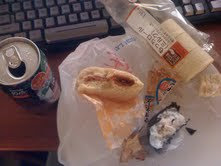It is interesting how the music that is playing while I’m driving can have a profound effect on how I drive. Certain songs or types of music just seem to make my right foot heavier than normal and soon my desire to pilot my car in and out of traffic takes over. To make matters worse, before I left my room I had been watching the Supercar Showdown by Jeremy Clarkson from the BBC’s hit show Top Gear.
Let me back up a moment. To really understand what was going on, I need to describe my car. Most cars on Okinawa fall into one of two categories, they are either brand new or they are what I would call beaters. Due to the relatively short periods of time that service members spend on Okinawa and the fact that you cannot bring your car from the states with you, cars on the island have a very hight turnover rate. Most cars are pretty inexpensive but new cars have prices comparable to those in the states. My car falls into the beater category. It is a 1996 Daihatsu Opti Classic that I acquired for $900. The paint is chipped and the seats are split but it runs okay and most importantly gets me away from Camp Kinser. The Opti handles like a go-cart and might have as much power as one, but I doubt it. The Opti has a 3 cylinder engine that when new was capable of producing a fearsome 65 horsepower. It weighs in at 690 kilograms or 1500 pounds, is billed as a mini-sedan and feels like one. I know for a fact that you can fit 5 grown men in the car, but you wouldn’t want to. Since power is something the Opti is short on anyway, I make it a habit of keeping the windows down and the air conditioning off. If I didn’t, I probably wouldn’t make it up most of the hills here.
Back to my dinner run story. There I was, in my fearsome Opti, AC/DC blaring though my 3 inch speakers at near blowout volume, windows down, with less than 65 horsepower under my right foot, ready to race through the streets of Okinawa at 35 miles per hour. After my third red light in less than a half a kilometer, I changed the music. Needless to say, the kill-joy aspects of this island just keep adding up. Life on a rock continues...
The fearsome Opti


.svg.png)






